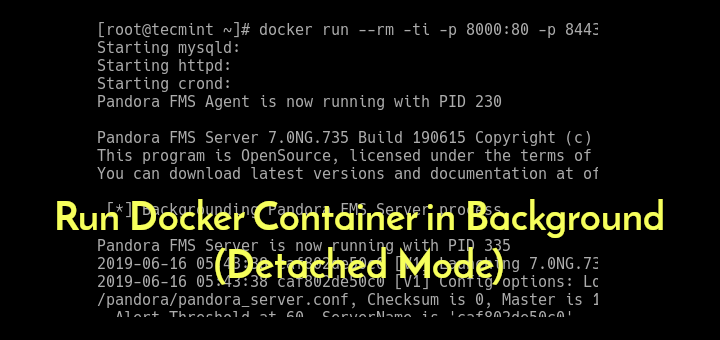

skopeo: The skopeo command is a tool for copying containers and images between different types of container storage.Podman also offers User Namespace support, including running containers without requiring root. It fully integrates with systemd, including the ability to generate unit files from containers and run systemd within a container. Podman has a lot of advanced features, such as the support for running containers in Pods. Also, podman stores its data in the same directory structure used by Buildah, Skopeo, and CRI-O, which will allow podman to eventually work with containers being actively managed by CRI-O in OpenShift. It supports the same features and command options you find in the docker command, with the main differences being that podman doesn’t require the docker service or any other active container engine for the command to work. Podman: The podman command can run and manage containers and container images. Removing the open-vm-tools Container and Image Getting and Running the open-vm-tools System Container Using the open-vm-tools System Container Image for VMware Removing the ovirt-guest-agent Container and Image Getting and Running the ovirt-guest-agent System Container Using the ovirt-guest-agent System Container Image for Red Hat Virtualization Getting and Running the RHEL flannel System Container Getting and Running the etcd System Container Creating Container Images based on the Atomic RHEL6 Init Container Image

Getting the Atomic RHEL6 Init Container Image Using the Atomic RHEL6 Init Container Image Creating Container Images based on the Atomic RHEL7 Init Container Image Getting the Atomic RHEL7 Init Container Image Using the Atomic RHEL7 Init Container Image Tips for Running the rhevm-guest-agent Container Getting and Running the RHEL rhevm-guest-agent Container Overview of the rhevm-guest-agent Container Using the Atomic rhevm-guest-agent Container Image Extending Net-SNMP to Provide Application Metrics Monitoring an Atomic Host System Using Net-SNMP Running Commands in the Net-SNMP Container Installing and Running the Net-SNMP Container Using the Atomic Net-SNMP Container Image

Getting and Running the RHEL sadc Container Using the Atomic System Activity Data Collector (sadc) Container Image Getting and Running the RHEL rsyslog Container Running Commands from the Support Tools Container Getting and Running the Support Tools Container How It Is Different from RHEL Atomic Tools

Using the Atomic Support Tools Container Image More Information About Running RHEL Tools Container Running Commands from the RHEL Tools Container Getting and Running the RHEL Tools Container Understanding Name Spaces in Privileged Containers Starting services within a container using systemd Running Containers as systemd Services with Podman Understanding Image Signing Configuration Files Creating a Signature for an Image in a Repository
#DOCKER REMOVE CONTAINER BY IMAGE ID HOW TO#
How to Extend the Root Partition Without Adding More Storage How to Add Additional Storage to the Host and Extend the Root Partition
#DOCKER REMOVE CONTAINER BY IMAGE ID FREE#
How to extend the Root Partition to use free space in volume group Changing the Size of the Root Partition After Installation Changing the Default Size of the Root Partition During Installation Managing Storage in Red Hat Enterprise Linux Atomic Host How to Leave Space in the Volume Group Backing Root During Installation Managing Storage in Red Hat Enterprise Linux Setting up a volume group and LVM thin pool on user specified block device LVM thin pool in a user specified volume group LVM thin pool in the volume group containing the root volume Managing Storage with Docker-formatted Containers Removing Images or Containers with Buildah Creating images from scratch with Buildah Using buildah copy and buildah config to Modify a Container Using buildah mount to Modify a Container Modifying a Container to Create a new Image with Buildah Building an Image from a Dockerfile with Buildah Using skopeo to work with container registries Remove a container image by its image ID or name (use -f to force): List containers that are running or have exited Pull a container image to the local system Finding, Running, and Building Containers with podman, skopeo, and buildah


 0 kommentar(er)
0 kommentar(er)
